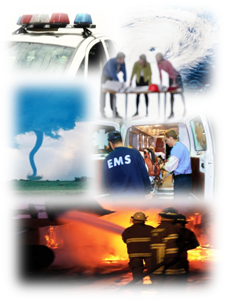1. Conduct a risk assessment that includes natural, man-made, and technological threats and identify the impact and potential loss if those incidents happen. Speak with local fire and police departments regarding their perspective on local threats and possible ways to prepare for them.
2. Once the threats are identified – prioritize and address the greatest risks. This should include preventative actions (mitigation) and developing plans to respond and recover from the highest risks. Focus documentation on easy to use checklists rather than large response plans that will be forgotten on an office shelf. The different services provided must also be addressed as they may likely require additional or unique procedures. For example, a fire and evacuation for a church should address mass building evacuation (like a business), children’s accountability and reunification with parents (like daycares and schools), and operation recovery (like a business).
3. Train church staff (including volunteers) on these emergency procedures and PRACTICE! The best plan is useless if no one knows what to do. There is no excuse why a church doesn't conduct fire drills or exercises for other threats at least once a year.
I highly recommend a church work with a preparedness, business continuity, security, or life safety expert to provide an outside perspective, even if just for a program review or basic training. Churches tend to rely on elders, church councils, and ministers for decision making and as previously mentioned, these people are not likely to have training or experience in preparedness. Hearing that outside perspective may identify areas for improvement that would otherwise be overlooked (not to mention save lives).
I’d like to finish with a brief story from my own experience. During a church VBS celebration my children were attending, a small boy about 5 burned his hand on the metal tools by the fire they were using to roast marshmallows. Surprisingly no one knew what to do about the burn so with the parents I took the boy into the kitchen to cool the burn and asked for the church medical kit. Since no one knew if the church had a med kit or where it was, I sent my son out to our car to retrieve our emergency kit and soon the little boy was patched up with burn salve, a gauze wrap, and a glow stick (kids always find those in my bag somehow). I don’t doubt the church had a med kit, but like preparedness itself – if only one or two people know what to do when a disaster (or little incident) happens it will inevitably be when they are gone and the result is the same as if you didn’t prepare at all.
Churches are at risk as much and in some ways or more than businesses and schools and by not preparing actually increase the impact from emergencies and disasters. Please, ask your church elders, pastor, priest, rabbi or other leaders if the church is prepared for natural and man-made disasters. If not, I’d be happy to speak with them about what positive actions they can take to be better prepared.
As always: Be Aware – Be Prepared – Be Safe.
.jpg)
 To wrap up my awareness campaign for this years’ National Preparedness Month I want to address an area that is normally overlooked but is important – preparedness for churches, faith-based and non-profit organizations.
To wrap up my awareness campaign for this years’ National Preparedness Month I want to address an area that is normally overlooked but is important – preparedness for churches, faith-based and non-profit organizations.